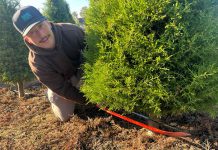You have just discovered that a mother raccoon has given birth to five adorable black-masked cubs in the crawl space under your house. Much as you love wild animals, you don’t want them living with you, and you know raccoon feces contain a parasite that causes serious illness in humans. So you go to the nearest pet products store, buy or rent a humane trap, bait it and soon mama is corralled. You scoop up the babies, carefully load the trap and raccoons into your car and drive out to the nearest park or reservoir, where you release the raccoon family. Problem solved, right?
Unfortunately, the problem may have been solved for you, but the raccoon family’s problems are just beginning. There are many reasons why relocating wild animals is rarely a good decision.
All animals are territorial, and by dropping off mama and her cubs in a new area, you have thrown a “new kid on the block” into a potentially dangerous environment. In order to survive and successfully raise her young ones, she will have to establish her own territory, defend herself and her cubs from rivals and predators, find food to eat and water to drink and locate safe shelter. This is a huge challenge for a single mom with five youngsters in a new environment. Remember, father raccoon does not play any role in helping to raise the young.
Mother raccoon chose your crawl space to give birth because it provided her with what she needed at that time: safety, warmth and access to food and water. Now she must start over, with five babies in tow. If the babies are too young to be very mobile, she is in even more trouble. The chances are good that she will be forced to abandon them to ensure her own survival. If mom leaves, the babies will die.
Many animals have amazing homing skills. Wild animals that have lived among humans have become urbanized, accustomed to depending on people for food (garbage, pet food and even pets themselves), water and shelter (your deck, attic, garage, shed or crawlspace). They may pass this behavior onto their young. Mother raccoon may try to return to your property. The journey may require crossing roadways and other dangerous areas. She may come in contact with predators. The chances of her making it “home” successfully are slim.
In addition, urbanized wildlife often live or travel in sewers and storm drains. They pick up diseases that, if the animal is relocated, can be transmitted to other wildlife. If they try to return to urban areas, they may bring wild diseases with them.
You thought you saw five babies with mom. But what if you missed one? What if there were more than five? Any that you did not relocate with mom are sure to die. Not only is this unfortunate for the raccoon family, you do not want the odor of a deceased animal under your home.
This raccoon family may have been evicted, but the crawl space under your home is still an attractive place for a raccoon. Unless you take steps to prevent any more animals from entering the area, you will have to face this issue again in the future.
For these and many other good reasons, relocating wildlife is against the law. The California Fish and Game Code of Regulations, Title 13 Sec. 671.6 states: “No person shall release into the wild without written permission of the commission (Fish and Game) any wild animal …” This law applies to professional wildlife trappers, too. Trappers cannot legally relocate an animal they have trapped on your property. By law, the animal must either be released on your property (which defeats the purpose of trapping it in the first place, unless you are able to quickly block the entrance to your home while the trapper is still there) or humanely euthanized.
Take the time to be sure that your property is not attractive to wild animals. Repair any holes that might provide access to the crawl space or attic areas, and block all other possible entrances. Do not leave pet food out at night. Wildlife will realize that your home is not a good habitat for them, and will move on.










